The healthcare industry is constantly developing, and digital transformation plays a significant role in shaping its future. Worldwide spending on digital transformation has already exceeded $1.3 trillion and is growing at 10.4% year-over-year.
Technological advancements are revolutionizing how healthcare services are delivered, right from from telemedicine to electronic health records.
In this blog post, we will look at the top 11 trends of digital transformation in healthcare that are currently making waves in the industry.
Whether you’re a healthcare provider, patient, or technology enthusiast, this post will provide valuable insights into the latest developments in the healthcare field and what they mean for its future.
So, let’s dive in!
What is Digital Transformation in Healthcare?
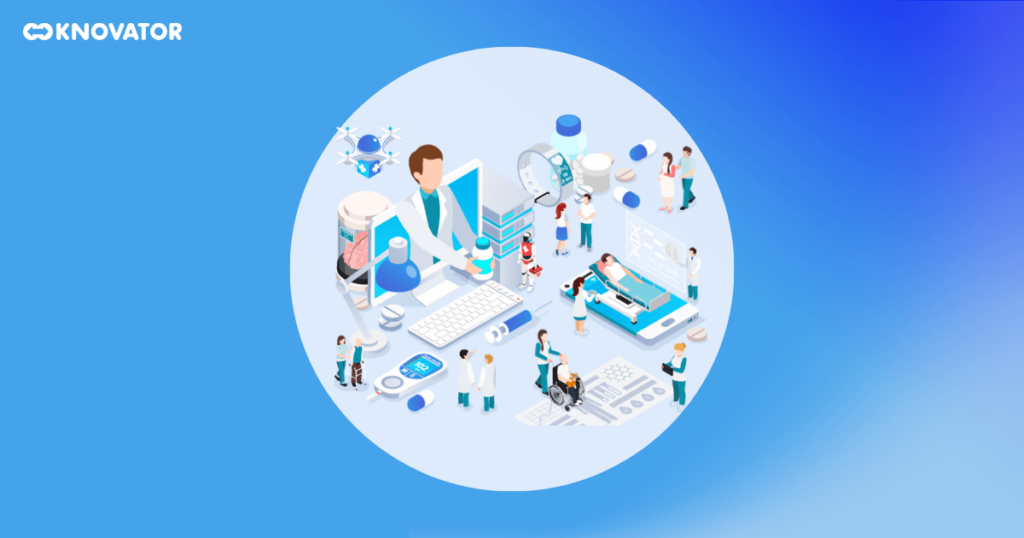 Digital transformation in healthcare uses advanced technologies and digital solutions in the healthcare industry. These solutions help providers to improve patient care and operational efficiency.
Digital transformation in healthcare uses advanced technologies and digital solutions in the healthcare industry. These solutions help providers to improve patient care and operational efficiency.
Digital healthcare innovation revolves around tools such as EHRs software, telemedicine, wearable devices, and AI to simplify the process of doctors and nurses. Thus, the main aim of the transformation is to improve patient care by providing more convenient maintenance and enhancing communication.
With digital transformation, doctors can keep electronic records of patient’s health information instead of paper files. Further, patients can have virtual doctor visits through video calls. Also, wearable devices can help them to track their health. Using these technologies makes healthcare more convenient and effective and can lead to better patient outcomes.
Benefits of Digital Transformation in Healthcare
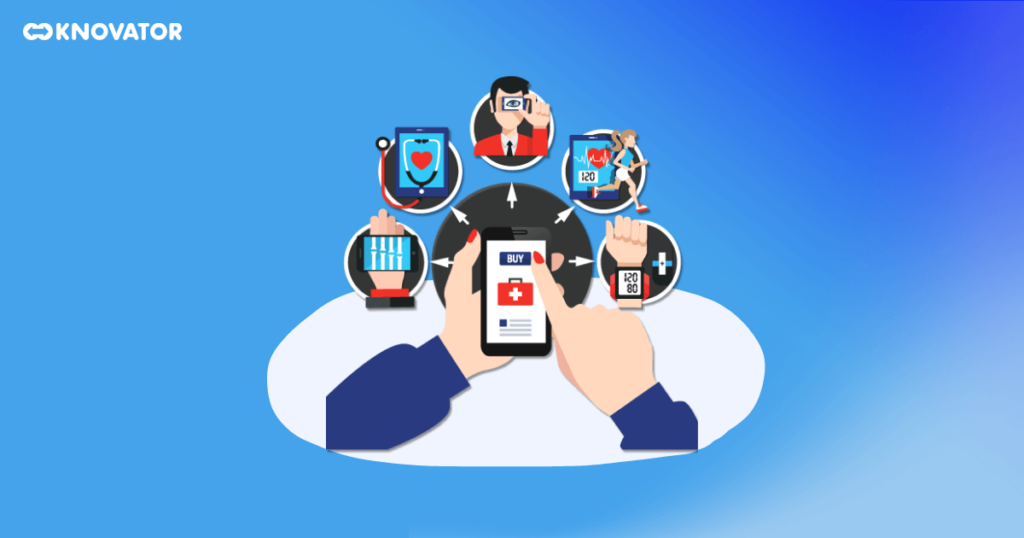 After looking at digital transformation in healthcare, let’s discuss its benefits. Digital transformation in healthcare can offer several benefits, including:
After looking at digital transformation in healthcare, let’s discuss its benefits. Digital transformation in healthcare can offer several benefits, including:
- Improved patient care
Providing access to real-time data, enabling remote monitoring, and facilitating communication between providers and patients.
- Increased efficiency
By automating tasks, reducing paperwork, and improving communication.
- Reduced costs
By eliminating the need for paper records, improving efficiency, and providing better care at a lower cost.
Trends of Digital Transformation in Healthcare
Here are the latest trends of digital transformation in healthcare:
1. Rise of on-demand healthcare
 The rise of on-demand healthcare is one of the most significant trends in digital transformation in healthcare. Statista states smartphones have accounted for over 50% of web traffic since 2019. This is due to the increasing availability of mobile devices and other technologies and the growing demand for timely and affordable healthcare services.
The rise of on-demand healthcare is one of the most significant trends in digital transformation in healthcare. Statista states smartphones have accounted for over 50% of web traffic since 2019. This is due to the increasing availability of mobile devices and other technologies and the growing demand for timely and affordable healthcare services.
On-demand healthcare allows patients to access healthcare services anywhere, anytime. As a result, it can be a major benefit for people with busy schedules or who live in rural areas.
Some popular on-demand services include virtual doctor visits, online prescription refills, and home health monitoring. These services help patients manage their chronic conditions, allow them the immediate care they need, and reduce their healthcare costs.
Overall, the rise of on-demand healthcare is transforming the delivery of healthcare services. As this trend is growing, it will significantly impact the future of healthcare.
2. Rise in Patient Portals
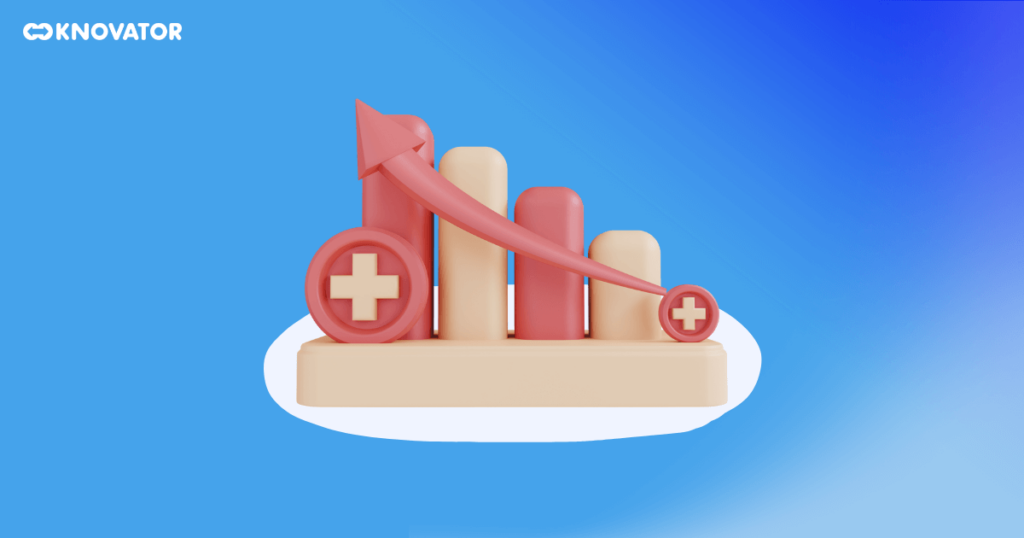 Patient portals are online platforms that enable patients to access their health records, schedule meetings, and communicate with their doctors. The rise of patient portals is one of the key trends in digital transformation in healthcare. These portals can improve patient engagement, convenience, and transparency.
Patient portals are online platforms that enable patients to access their health records, schedule meetings, and communicate with their doctors. The rise of patient portals is one of the key trends in digital transformation in healthcare. These portals can improve patient engagement, convenience, and transparency.
Moreover, patient portals enhance patient engagement by giving 24/7 access to their health information. This allows them to be more involved in their own care by asking questions from doctors related to their health. Additionally, these tools can improve convenience by allowing patients to schedule meetings and refill prescriptions online. This can save patients’ time and reduce the hassle.
It is worth noting that patient portals can improve transparency by giving patients access to their health records. This allows patients to see their lab test results, diagnoses, and treatment plans. It may help the patients to better understand their health and make informed decisions about the same.
3. Big Data for Patient Care
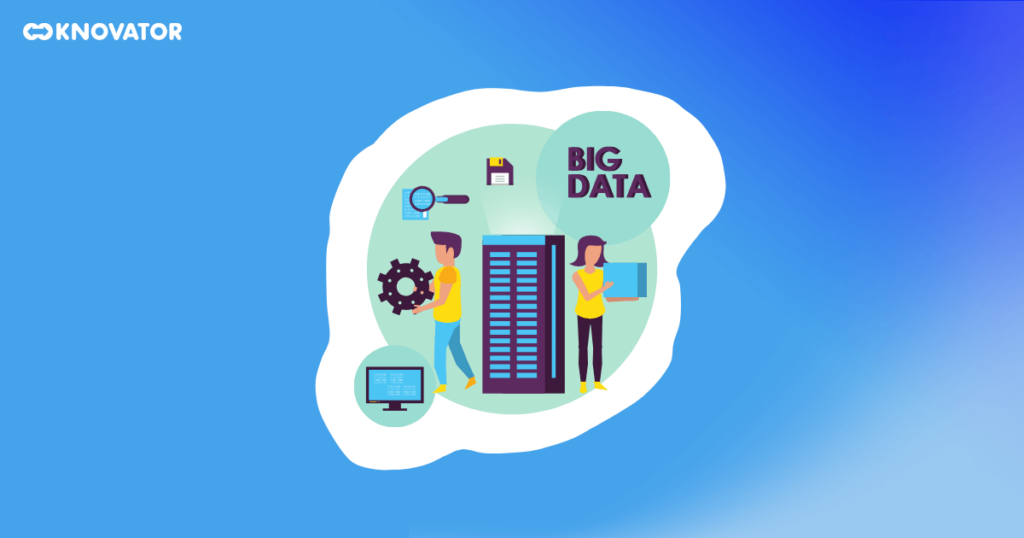 Big data is transforming the digital healthcare industry by providing new insights into patient care. By analyzing large datasets of patient data, healthcare providers can better understand disease risks, improve diagnosis, and develop new treatments.
Big data is transforming the digital healthcare industry by providing new insights into patient care. By analyzing large datasets of patient data, healthcare providers can better understand disease risks, improve diagnosis, and develop new treatments.
Big data can personalize patient care, improve the efficiency of healthcare delivery, and reduce costs.
Here are some specific examples of how big data is being used in patient care:
- Predictive analytics
Big data can predict which patients are at risk for developing certain diseases. This information can be used to intervene early and prevent disease progression.
- Personalized medicine
Big data can identify the best treatment options for individual patients. This may result in improved patient outcomes and reduced costs.
- Remote patient monitoring
Big data can help monitor patients remotely. This can help to identify health problems early and prevent unnecessary hospital visits.
4. Using Augmented Reality (AR) and Virtual Reality (VR) to treat patients
 Augmented reality (AR) and virtual reality (VR) are other key trends transforming the healthcare industry. By 2025, the worldwide market for virtual and augmented reality in healthcare is projected to achieve a valuation of $5.1 billion.
Augmented reality (AR) and virtual reality (VR) are other key trends transforming the healthcare industry. By 2025, the worldwide market for virtual and augmented reality in healthcare is projected to achieve a valuation of $5.1 billion.
These technologies are being used to enhance patient care in some ways, including:
- Surgeons can plan surgeries better by creating 3D models of patients’ anatomy.
- Patients can know about their condition and treatment options through interactive materials.
- VR can help reduce pain and anxiety by distracting patients during treatment.
- VR can also help treat post-traumatic stress disorder (PTSD) by recreating traumatic experiences in a safe and controlled virtual environment.
5. Use of wearable medical devices
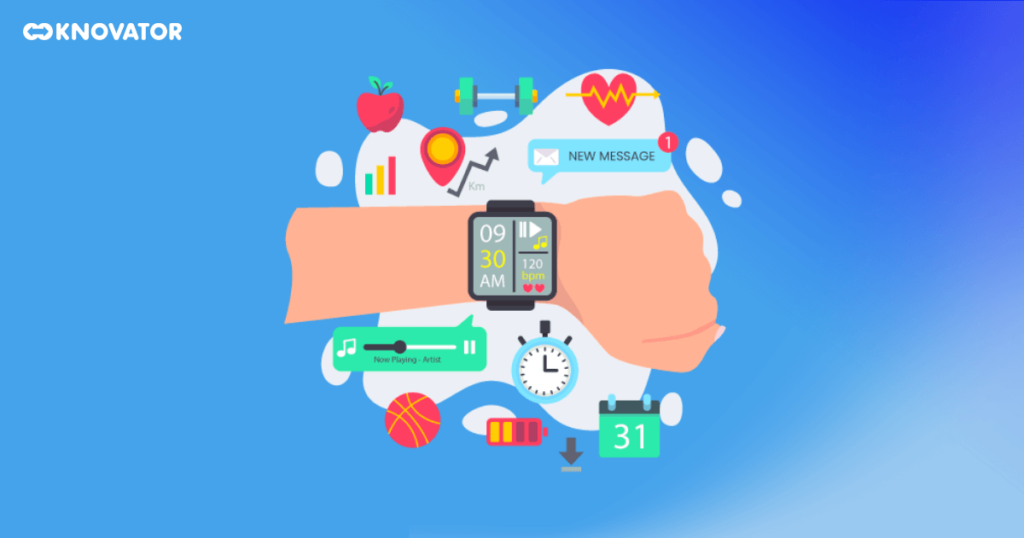 Nowadays, people are increasingly focused on preventive care. They are becoming more conscious of seeking information about their health more frequently. This is where wearable medical devices are an essential aspect of the digital transformation of healthcare.
Nowadays, people are increasingly focused on preventive care. They are becoming more conscious of seeking information about their health more frequently. This is where wearable medical devices are an essential aspect of the digital transformation of healthcare.
These devices collect and transmit data on a patient’s vital signs, activity levels, and other health metrics. This data can be used to monitor patient progress, identify potential health problems, and deliver personalized care.
Some common wearable medical devices include:
- Smartwatches
Smartwatches can track heart rate, steps taken, and sleep patterns.
- Fitness trackers
Fitness trackers can track metrics like calories burned, and distance traveled.
- Electrocardiogram (EKG) monitors
EKG monitors can track the electrical activity of the heart.
- Continuous glucose monitors
Continuous glucose monitors can help track blood sugar levels in real time.
6. Rise in Predictive Healthcare
 The healthcare industry is changing with technology, and one promising area is predictive healthcare. Predictive healthcare uses data and analytics to identify patients at risk of developing certain diseases, even before they show symptoms. This allows doctors to act early to prevent or manage these diseases better.
The healthcare industry is changing with technology, and one promising area is predictive healthcare. Predictive healthcare uses data and analytics to identify patients at risk of developing certain diseases, even before they show symptoms. This allows doctors to act early to prevent or manage these diseases better.
Several technologies, including artificial intelligence (AI), machine learning, and big data, are used to power predictive healthcare. These technologies can process big data sets from several sources, such as electronic health records, social media, and wearable devices. Then, this data can identify patterns and trends that help to predict who is at risk for developing certain diseases.
7. Increase in Organ Care Technology & Bioprinting
 Two of the most exciting areas of digital transformation in healthcare are organ care technology and bioprinting.
Two of the most exciting areas of digital transformation in healthcare are organ care technology and bioprinting.
With organ care technology, you can extend the lifespan of donated organs, making them available to more patients. Bioprinting is even more revolutionary, allowing you to create living tissues and organs from scratch. This could one day lead to a future where organ transplants are no longer necessary.
The increase in organ care technology and bioprinting is a sign of the progress being made in digital transformation for healthcare. At last, these technologies can potentially improve the quality of life for millions of people.
8. Use of artificial intelligence
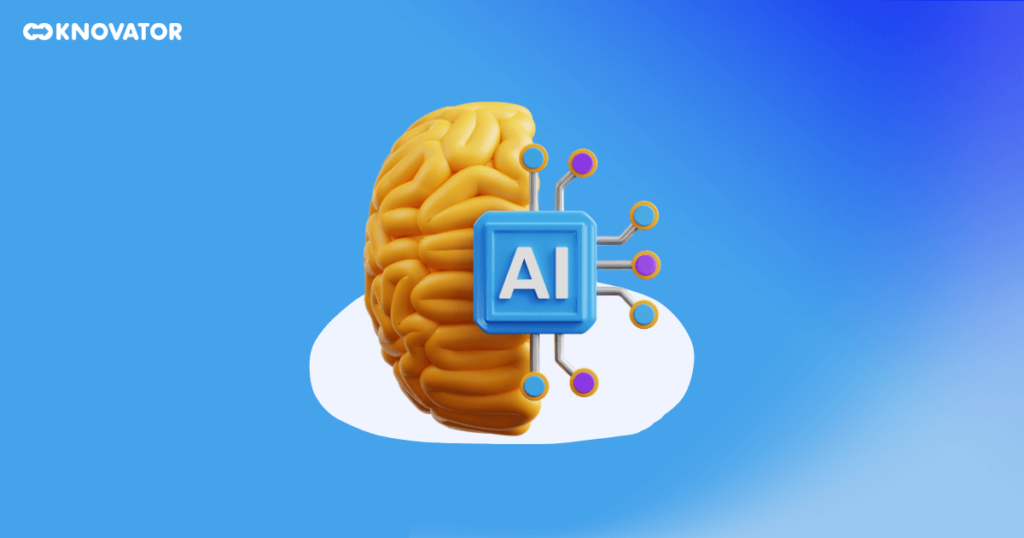 Artificial Intelligence is another growing trend in healthcare and digital transformation.
Artificial Intelligence is another growing trend in healthcare and digital transformation.
AI is being used to improve healthcare in a variety of ways, including:
- Diagnosis
AI can analyze medical images and data to help doctors diagnose more accurately.
- Treatment
It can personalize treatment plans for patients based on their individual needs.
- Monitoring
It can monitor patients remotely and identify potential problems early.
- Research
It can be used to analyze large datasets of medical data to identify new insights and treatments.
9. Blockchain and better electronic health records
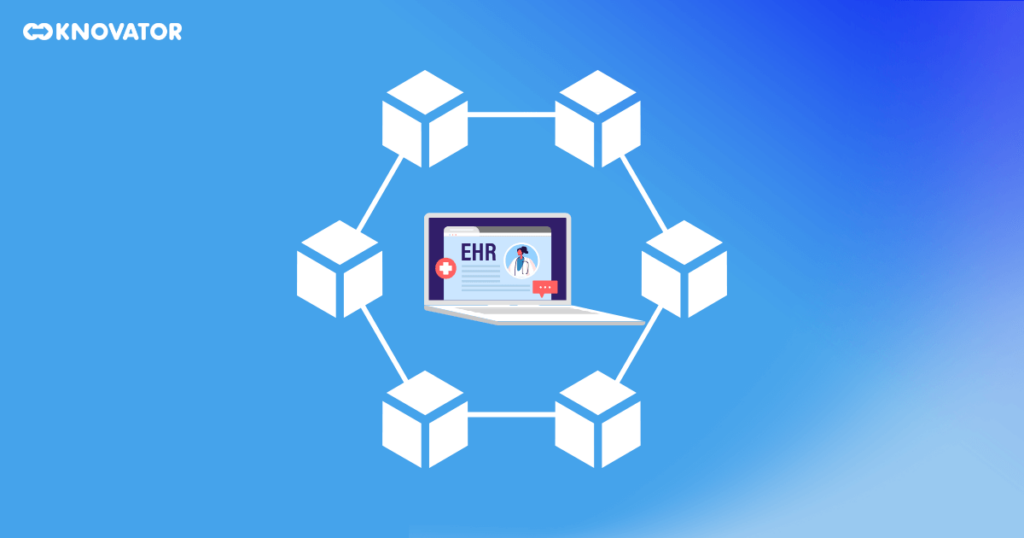 Blockchain is a technology that can be used for storing data and sharing electronic health records (EHRs) securely and transparently. This can help improve the interoperability of EHRs, one of the key challenges in healthcare today.
Blockchain is a technology that can be used for storing data and sharing electronic health records (EHRs) securely and transparently. This can help improve the interoperability of EHRs, one of the key challenges in healthcare today.
Further, blockchain can also help protect patient data privacy, as it is tough to tamper with data stored on a blockchain.
Here are some of the benefits of using blockchain for EHRs:
- Increased security
Blockchain is a very secure technology, making it difficult to tamper with patient data.
- Enhanced privacy
Blockchain can help to protect patient privacy by encrypting data and making it difficult to access without authorization.
- Improved efficiency
Blockchain can help streamline healthcare by simplifying accessing and sharingng patient data.
10. Assistance of Cellphones in healthcare
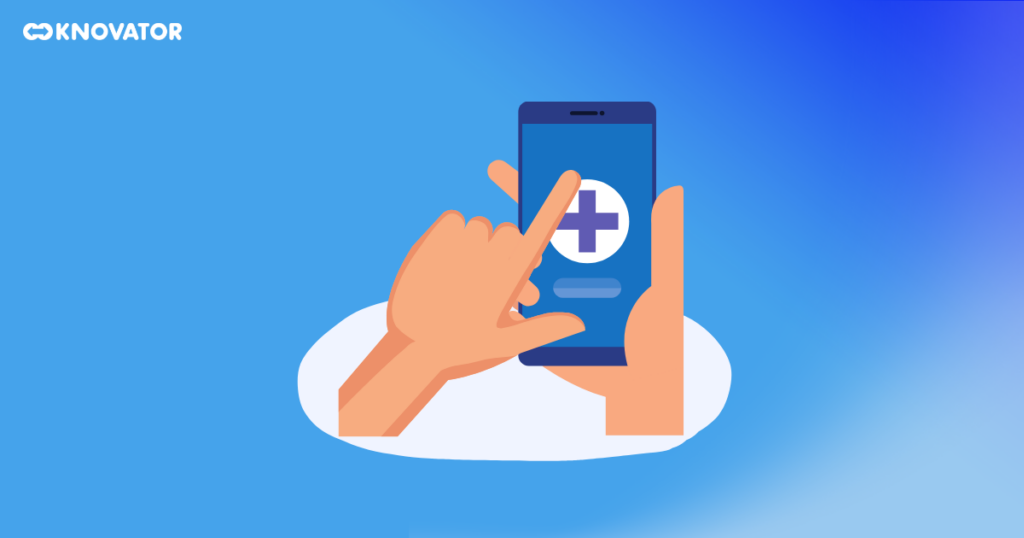 Cell phones are playing an increasingly essential role in healthcare, and one of the top trends in digital transformation in healthcare is the use of mobile health (mHealth) applications. These apps can track various health metrics, including steps taken, calories burned, heart rate, and sleep quality. Doctors and medical analysts can then use this data to provide patients with actionable insights about their health.
Cell phones are playing an increasingly essential role in healthcare, and one of the top trends in digital transformation in healthcare is the use of mobile health (mHealth) applications. These apps can track various health metrics, including steps taken, calories burned, heart rate, and sleep quality. Doctors and medical analysts can then use this data to provide patients with actionable insights about their health.
11. Rise in 5G Assistance
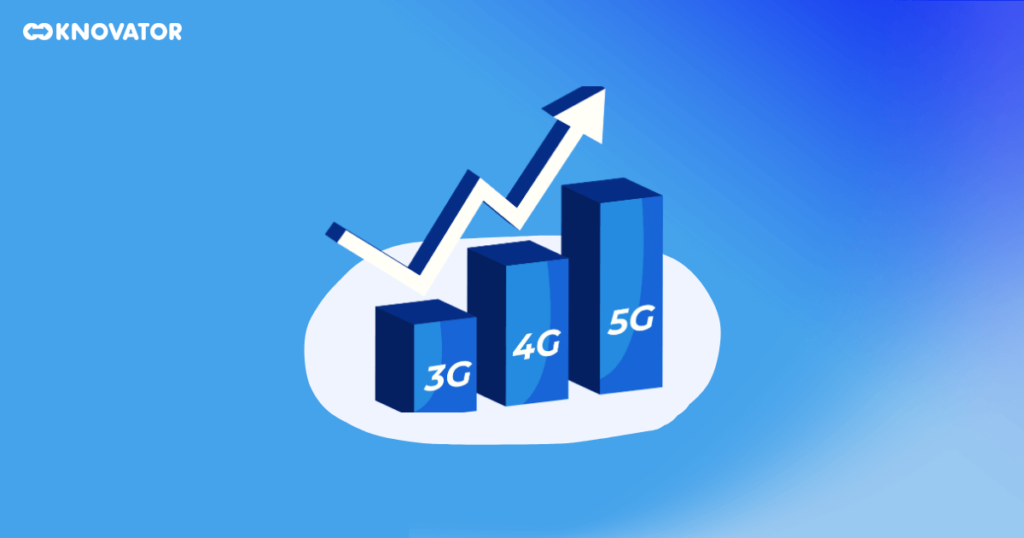 The latest cellular network generation is 5G, which provides significant advancements such as faster data speeds, lower latency, and higher capacity compared to previous generations.
The latest cellular network generation is 5G, which provides significant advancements such as faster data speeds, lower latency, and higher capacity compared to previous generations.
This makes it ideal for a variety of healthcare applications, such as:
- Remote patient monitoring
- Virtual reality-assisted surgery
- Connected ambulances
- Wearable medical devices
As 5G networks continue to roll out, you can expect a significant rise in using 5G-enabled healthcare solutions. This will help improve patient care quality, reduce costs, and make healthcare more accessible to people in remote areas.
The Future of Healthcare is Digital
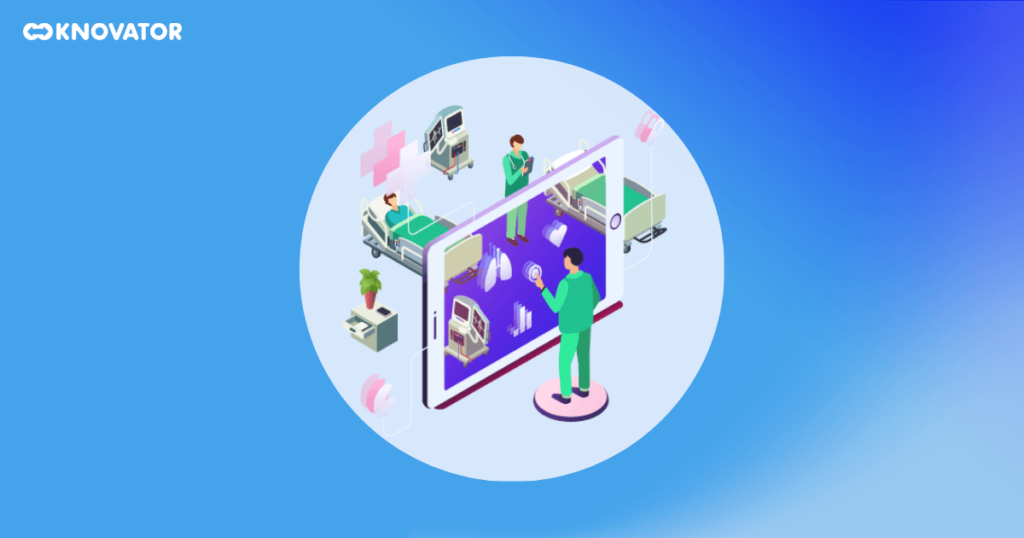 Digital transformation is rapidly altering the healthcare industry. The 11 trends discussed in this blog post are just a few ways technology impacts healthcare. These trends positively impact the quality of care, the efficiency of healthcare delivery, and the cost of healthcare. As digital transformation continues to grow, it is clear that it will significantly impact the future of healthcare.
Digital transformation is rapidly altering the healthcare industry. The 11 trends discussed in this blog post are just a few ways technology impacts healthcare. These trends positively impact the quality of care, the efficiency of healthcare delivery, and the cost of healthcare. As digital transformation continues to grow, it is clear that it will significantly impact the future of healthcare.







